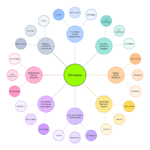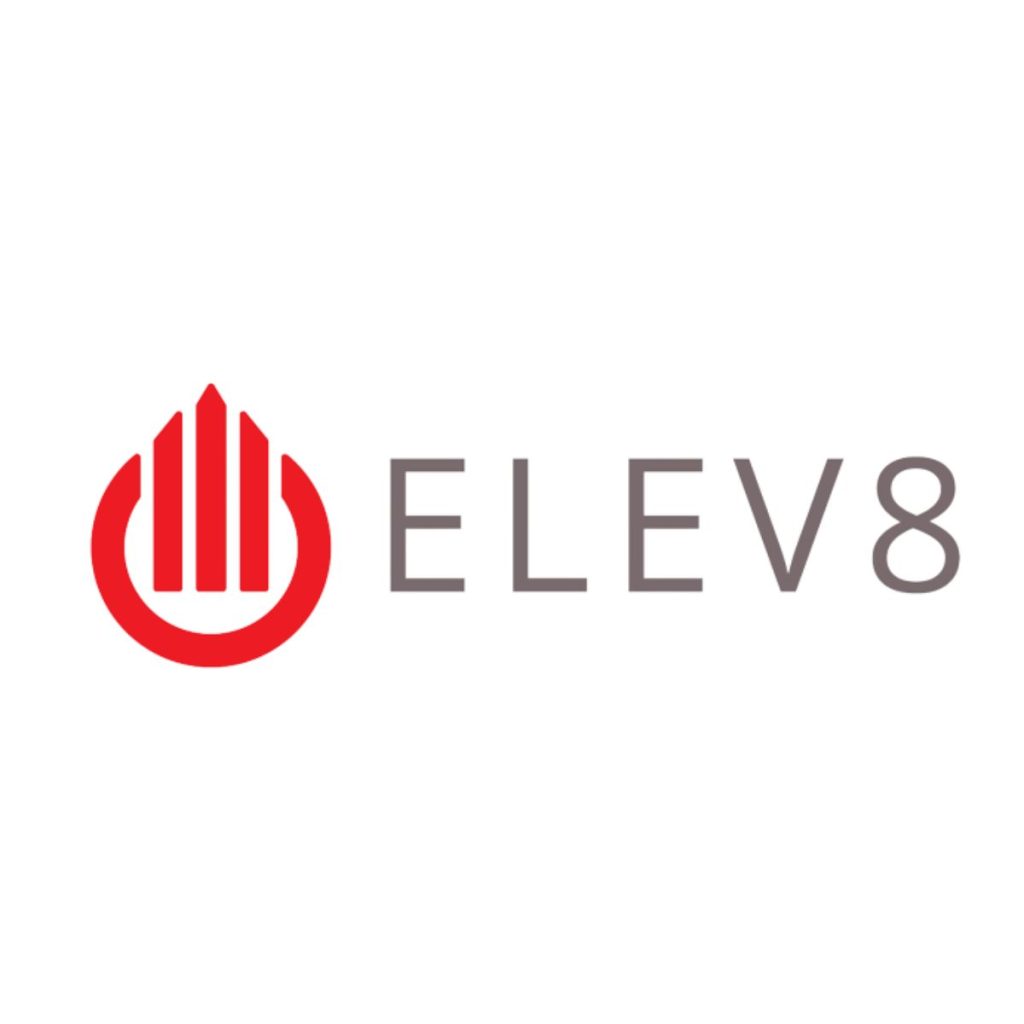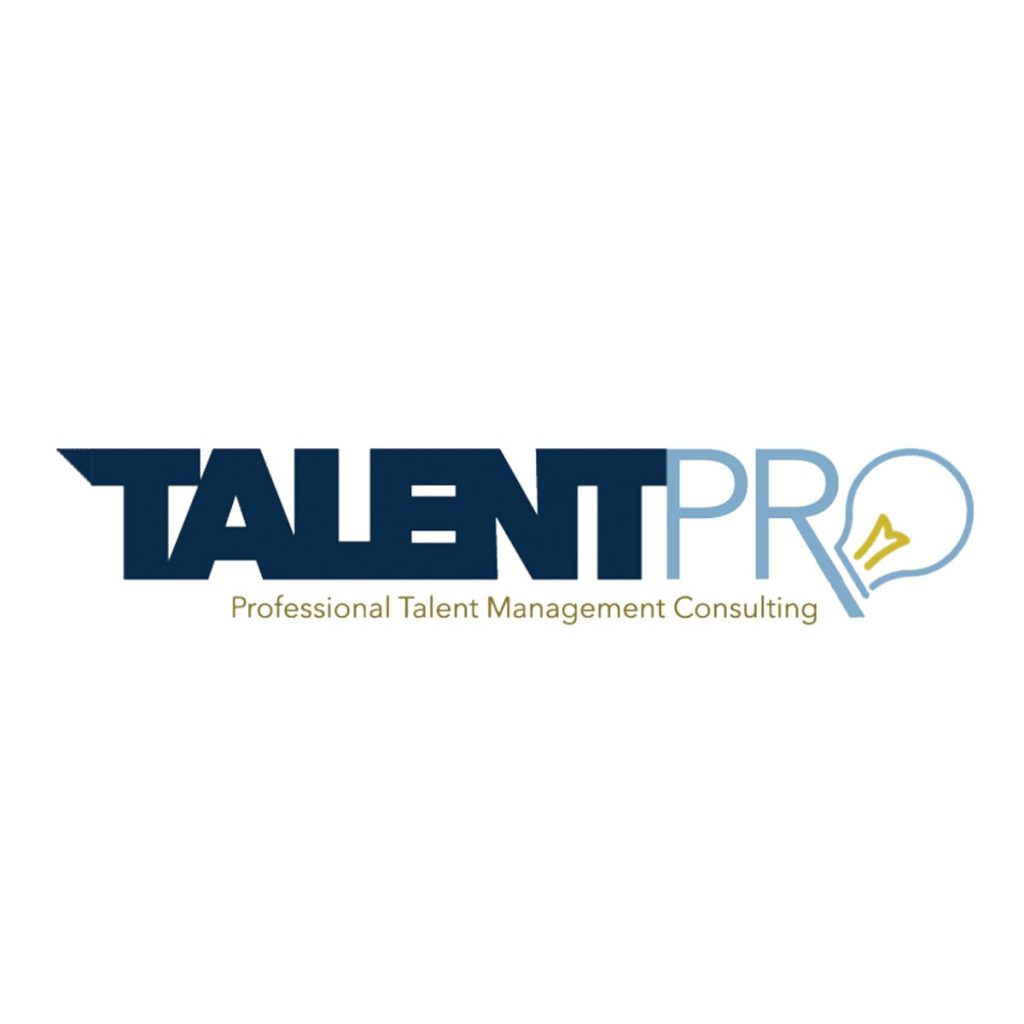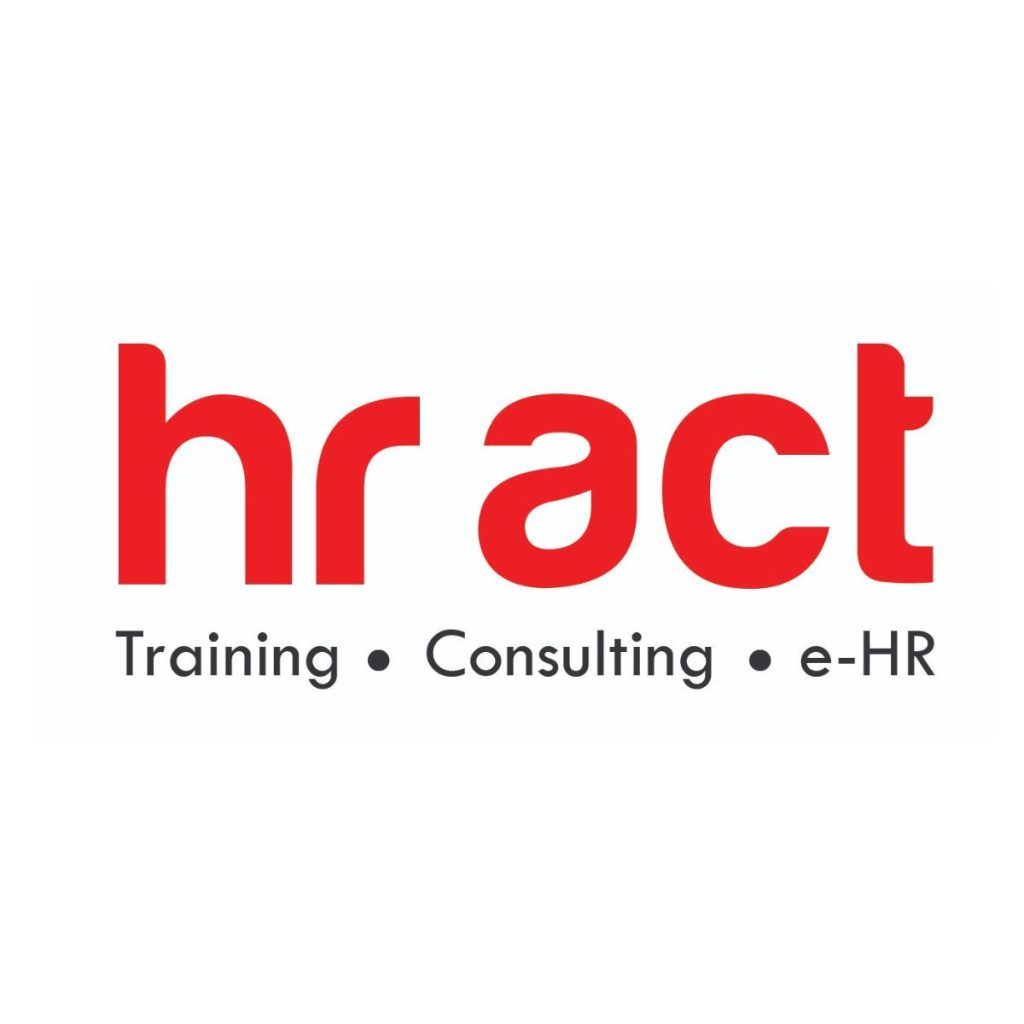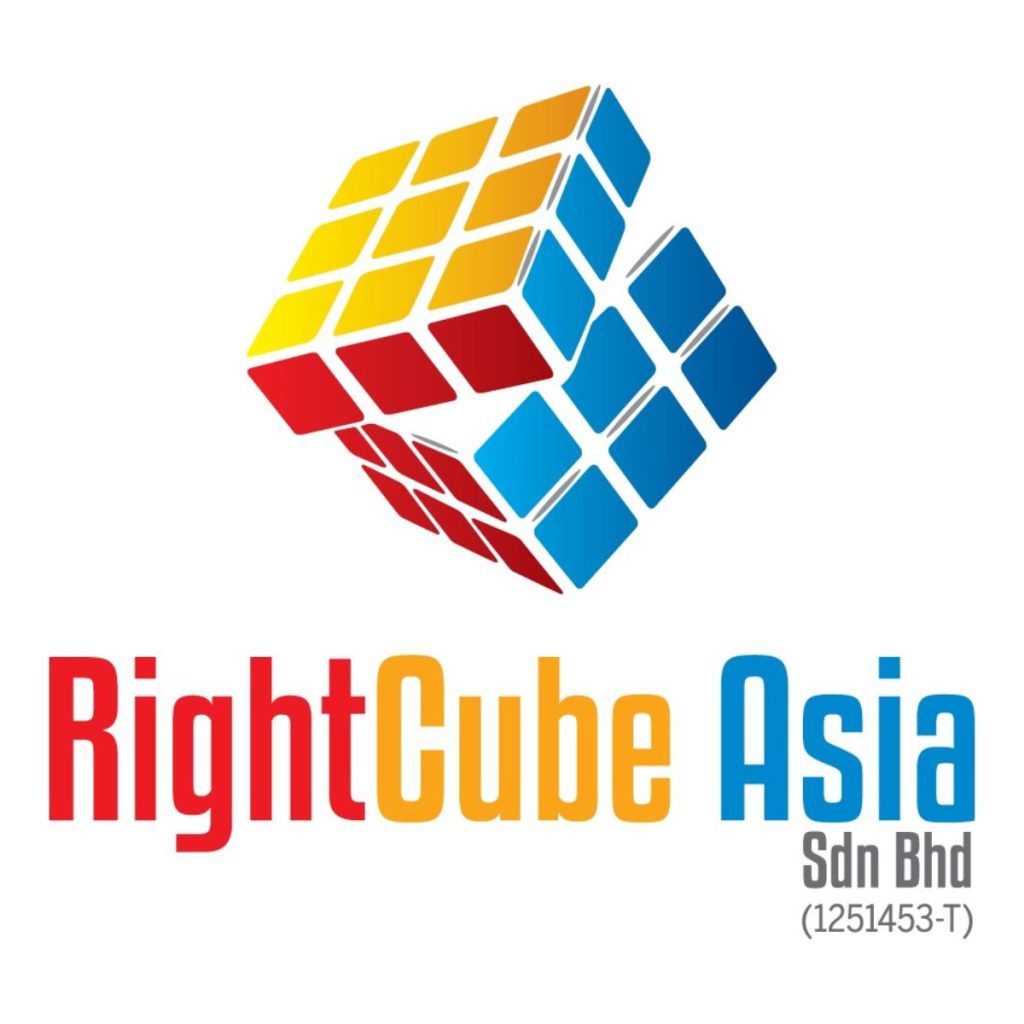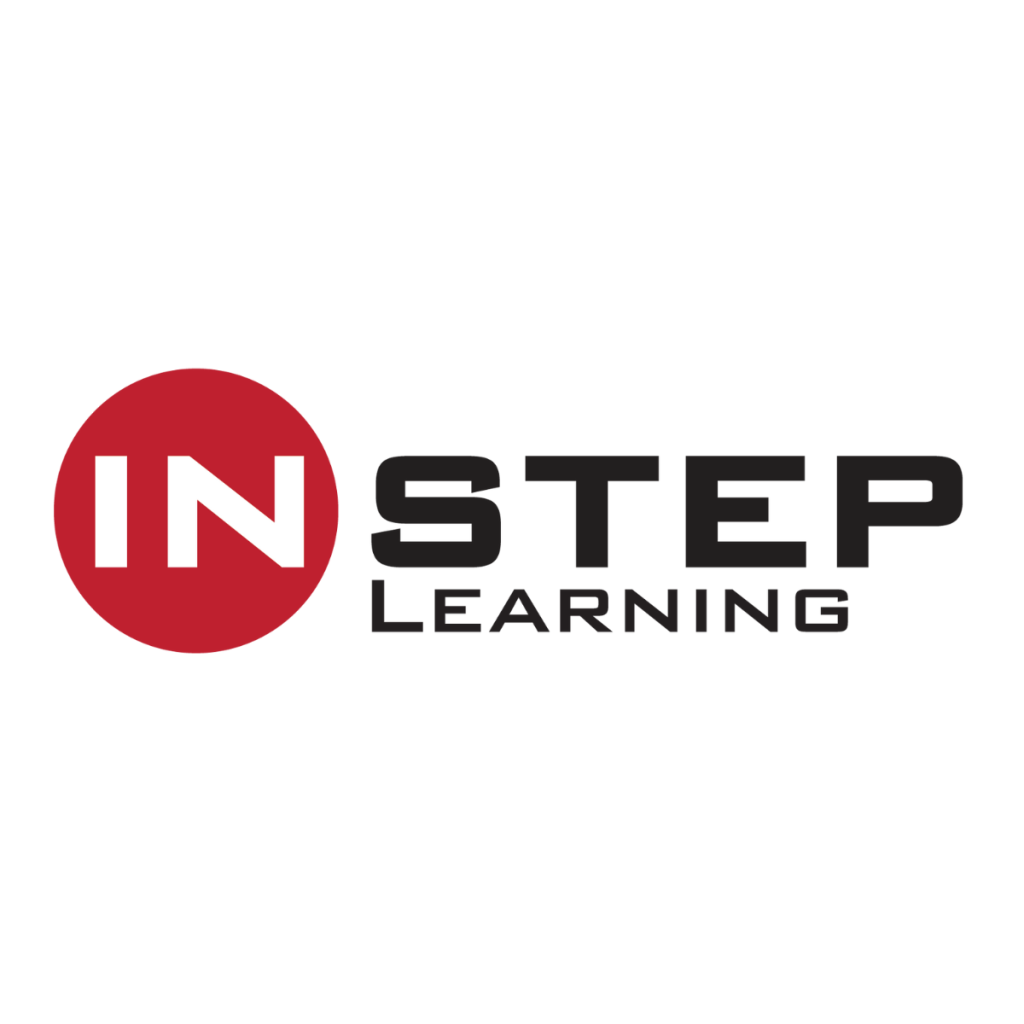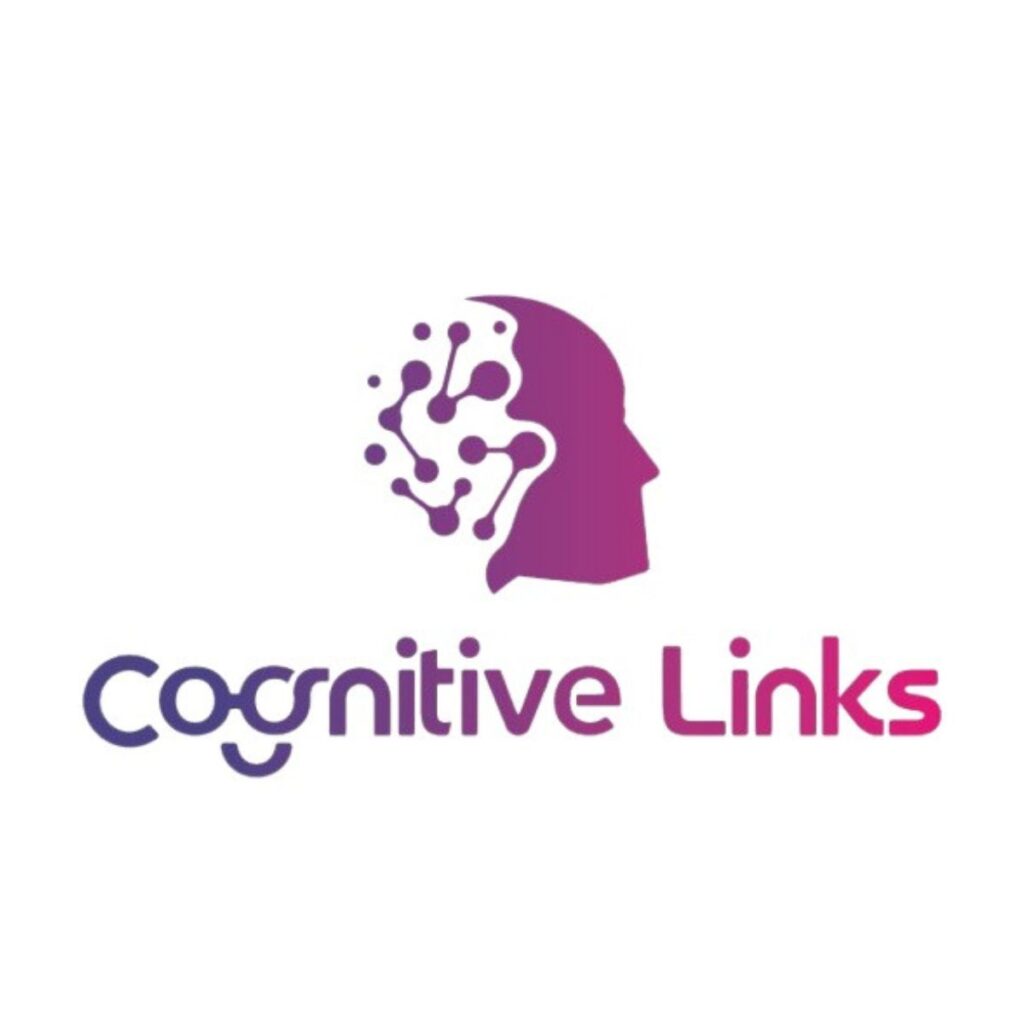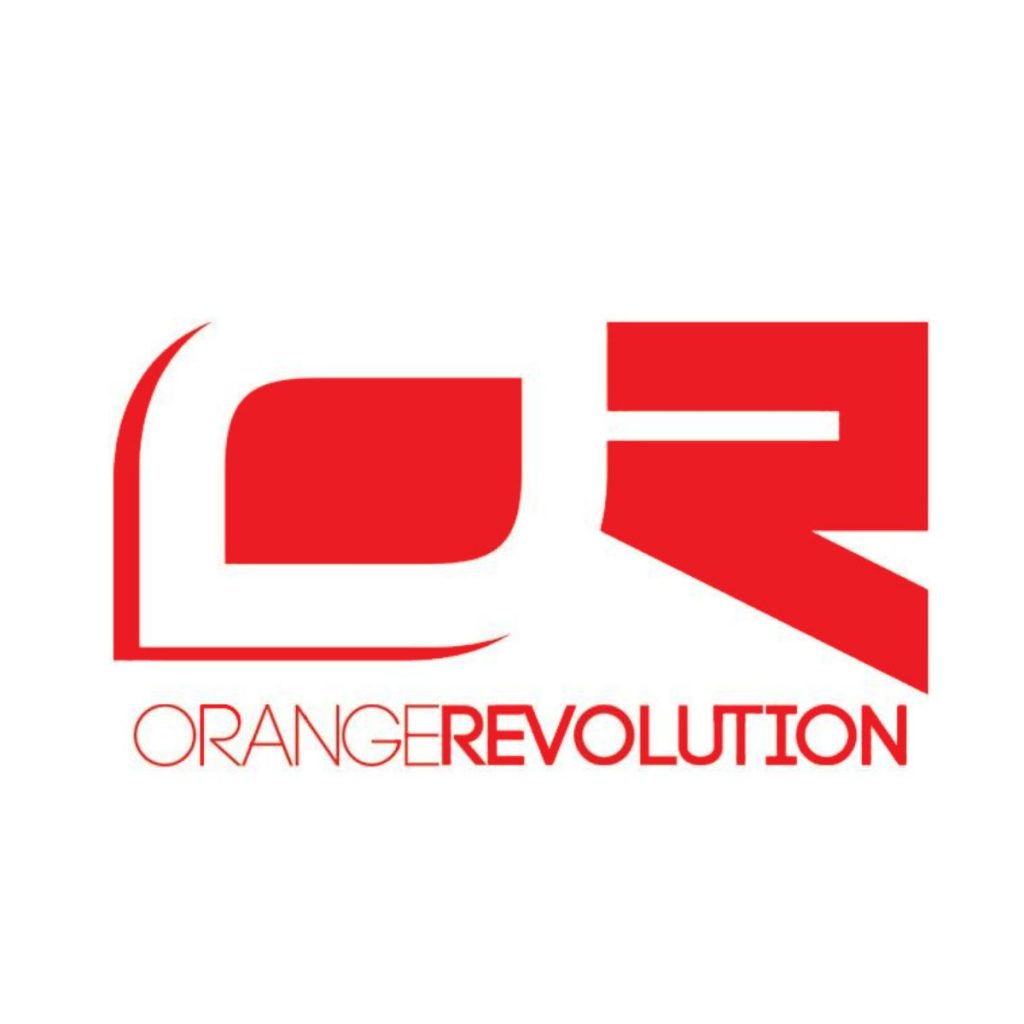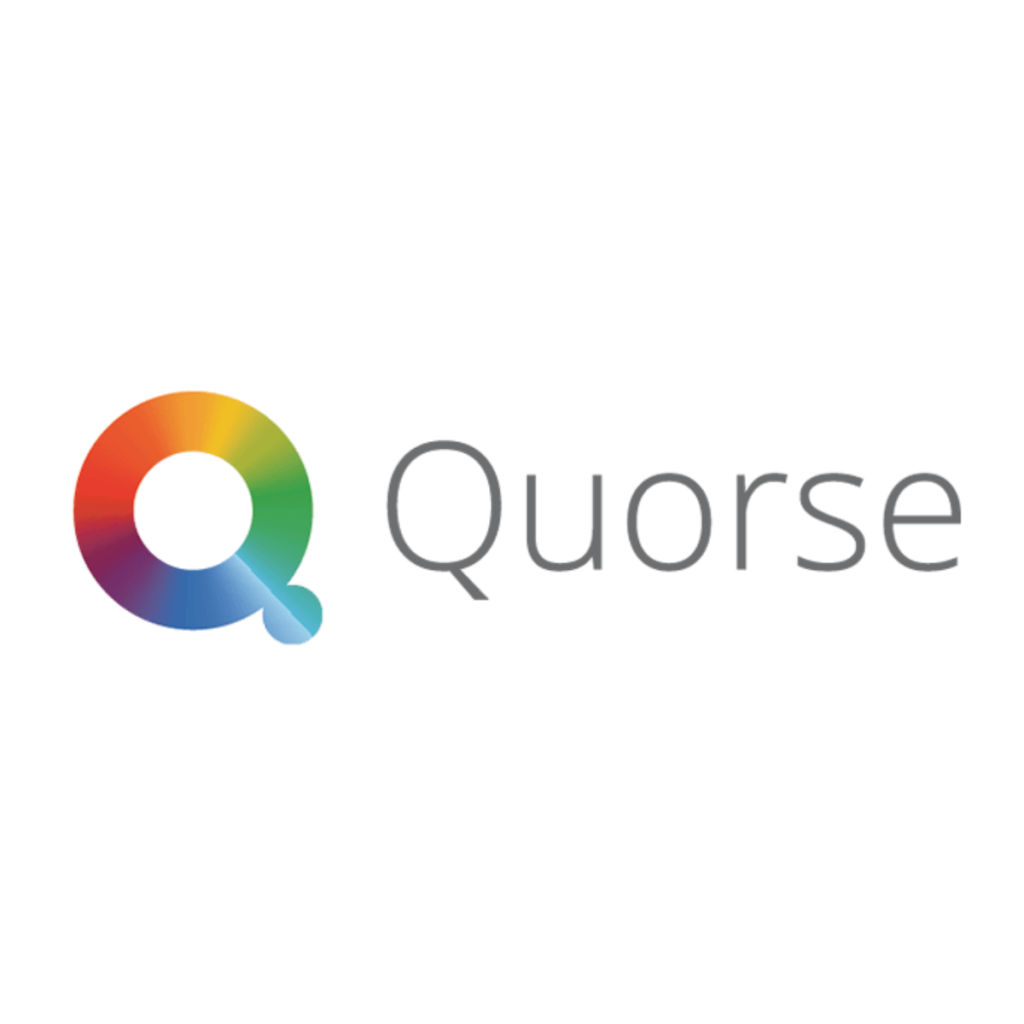GN-Series - Prompting Core & Experiments

The GreenoNetics® Prompt Engineering Techniques (GN-PET™) is the foundational framework that empowers users to design high-performance AI prompts through a structured, outcome-aligned approach. It provides a systematic method to guide the interaction between humans and language models by ensuring every element of the prompt is intentional, contextual, and aligned with strategic objectives.
GN-PET™ introduces eight core elements that together shape the quality, relevance, and effectiveness of AI responses: Role, Objective & Outcome, Structure & Format, Context & Perspective, Tone & Style, Keywords & Focus, Audience Level & Knowledge Assumption, and Constraints & Boundaries. These elements serve as building blocks for prompt design across varied domains such as education, business, decision-making, research, and innovation.
As the backbone of the GN-CPE® Certified Prompt Engineer Programme, GN-PET™ enables consistent training, scalable implementation, and repeatable results. The framework facilitates both technical precision and creative flexibility—ensuring prompts are not only accurate but also engaging and ethically sound.
From novice learners to seasoned AI professionals, GN-PET™ fosters deeper understanding, faster iteration, and better control over AI outputs—making it an indispensable tool for any organization aiming to adopt, govern, and scale generative AI.

AI Prompt Engineers and Designers
Corporate Trainers and AI Learning Facilitators
Digital Transformation and Innovation Teams
Knowledge Workers Enhancing Workflow with AI
Research Analysts and Content Developers
Marketing and Communication Specialists
Ethics and Compliance Reviewers
Educational Technologists and Instructional Designers

Understand the eight essential elements of prompt engineering
Apply GN-PET™ to craft clear, goal-oriented, and ethical prompts
Improve AI output quality by optimizing prompt structure and scope
Match tone, style, and context to user expectations and use cases
Customize prompts based on audience expertise and knowledge assumptions
Enforce boundaries and constraints to maintain output reliability and safety
Build scalable prompt templates for enterprise-level reuse
Integrate GN-PET™ as a standard in AI interaction governance and training

The GreenoNetics® Protocol for Prompt Engineering Techniques (GN-ProtoPET) transforms the eight foundational elements of GN-PET™ into a repeatable, measurable, and ethically grounded operational cycle. This protocol serves as the core engine for consistent, high-impact prompt design—supporting strategy-aligned AI outputs across industries, domains, and complexity levels.
Built to professionalize prompt engineering, GN-ProtoPET introduces a six-step cycle: Prompt Pre-Planning, Prompt Structuring, Generation, Iterative Refinement, Ethical Safeguarding, and Feedback Looping. These stages ensure that every prompt is not just technically sound but also context-aware, bias-mitigated, and aligned with organizational values and user intent.
The protocol guides prompt engineers, educators, and enterprise teams through actionable checkpoints—embedding governance, learning analytics, and quality control into each phase. Its strength lies in its ability to balance creative freedom with systematic rigor, ensuring that AI interaction remains purposeful, ethical, and effective at scale.
GN-ProtoPET is the execution backbone of the GN-CPE® Certification Programme and is designed to be integrated into design sprints, training simulations, AI governance playbooks, and product development workflows.

Prompt Engineers and AI Designers
Corporate AI Integration Teams
Strategic Decision-Making Units
Learning & Development Designers
Compliance and AI Governance Officers
Innovation Labs and Product Managers
Enterprise Chatbot and Virtual Assistant Developers
Ethical AI Research and Evaluation Committees

Execute a six-phase protocol for designing, testing, and refining AI prompts
Translate GN-PET™’s eight elements into structured prompt workflows
Apply strategic alignment methods during prompt pre-planning
Structure prompts using best practices for clarity, tone, and format
Refine AI outputs through feedback-informed iterations
Embed ethical safeguards and mitigation strategies in prompt design
Measure prompt performance with quality and impact metrics
Institutionalize prompt engineering as an operational discipline across teams

The GreenoNetics® Strategic Prompt-to-Action Transformation Framework (GN-Catalyst) is built to convert AI-generated insights into executable strategies, tasks, and organizational impact. It bridges the gap between conceptual prompting and real-world implementation by aligning AI outputs with strategic outcomes, stakeholder needs, and execution cycles.
GN-Catalyst follows the T.I.S.A.F.E. Cycle—Trigger, Interpret, Structure, Activate, Follow-up, and Evaluate—providing a clear roadmap for translating ideas into action. It is ideal for leaders, strategists, and transformation teams who want more than just AI answers—they want direction, accountability, and execution.
This framework plays a critical role in moving AI from ideation to impact. Whether it’s driving a new initiative, solving a business challenge, or deploying a learning solution, GN-Catalyst ensures that prompt engineering becomes an engine of transformation—not just information. It also integrates change-readiness prompts, stakeholder alignment (via GN-StakeLens), and adaptive performance feedback mechanisms.
Used alongside GN-CPE® certification levels, GN-Catalyst operationalizes prompt outputs into strategic roadmaps, business process enhancements, and actionable change management plans.

Strategy & Transformation Teams
Project Managers and Task Force Leads
Business Consultants and Change Agents
AI Prompt Engineers in Enterprise Deployment
Corporate Innovation & R&D Units
Executive Decision-Makers
L&D Teams Designing Action-Based Learning
Digital Process Owners and Agile Teams

Map the lifecycle of a prompt from insight to implementation
Use the T.I.S.A.F.E. model to structure action-driven prompting
Translate generative outputs into KPIs, goals, and task lists
Align prompts with execution roles, timelines, and workflows
Trigger decision-specific prompts for action clarity and velocity
Track, evaluate, and refine the effectiveness of action-driven prompts
Reduce the gap between strategy formulation and operational delivery
Enhance cross-functional collaboration through shared AI-driven plans
GN-Series - Cognition, Context & Emotion
🌐 Overview:
The GreenoNetics® Contextual Intelligence & Prompt Framing Framework (GN-ContextMap) empowers users to structure prompts with deep situational awareness, ensuring that every AI interaction is shaped by relevant background, perspective, and framing.
By embedding context as a core layer, this framework dramatically improves the clarity, relevance, and alignment of AI-generated outputs.
GN-ContextMap follows the C.L.A.R.I.F.Y. Flow—Contextualize, Layer, Align, Reframe, Inject, Filter, Yield—guiding prompt engineers through a structured lens to frame tasks, queries, or dialogue with clarity and intentionality. It is especially useful for high-stakes decision-making, complex communication, cross-cultural understanding, and ethical AI deployment.
This framework integrates naturally with other GreenoNetics® systems like GN-PET™, GN-StakeLens, and GN-UIM. It improves prompt specificity, enhances user-AI trust, and prevents hallucinations or misinterpretations.
In AI-augmented workplaces, GN-ContextMap helps teams build prompts that reflect real-world constraints, audience needs, and organizational nuances. It’s the difference between vague input and transformational output.
🏢 Designed For:
Prompt Engineers and Content Strategists
Legal, Compliance, or Risk Teams
Executive Assistants using AI for planning
AI Ethics & Governance Committees
Cross-Cultural Communication Trainers
Public Relations & Crisis Management Teams
Analysts and Policy Writers
UX Designers and Conversation Architects
🎯 Learning Outcomes:
Understand the role of context in shaping prompt accuracy and tone
Apply the C.L.A.R.I.F.Y. Flow to structure prompts with greater relevance
Layer background information and perspectives effectively into AI input
Reframe prompts to adjust for audience, time, or sensitivity
Use filters and role constraints to align outputs with organizational policy
Enhance user control over AI response style and framing logic
Reduce errors and hallucinations by anchoring prompts in real-world context
Integrate GN-ContextMap with broader strategic or instructional workflows
🌐 Overview:
The GreenoNetics® Resilience & Stress-Awareness Prompting Framework (GN-Resilio) empowers individuals and teams to harness the potential of generative AI for emotional regulation, stress awareness, and mental well-being. Designed around six resilience-enhancing components—Recognize, Reframe, Reflect, Regulate, Reinforce, and Reconnect—GN-Resilio acts as a prompt-driven coaching system that supports both personal growth and organizational wellness.
This framework helps users interact with AI in a way that encourages self-awareness, psychological safety, and adaptive coping mechanisms. Through journaling prompts, scenario reflections, mindset reframing exercises, and simulated emotional guidance, GN-Resilio turns generative AI into a powerful support system for mental resilience and stress transformation.
Whether used for daily check-ins, team well-being facilitation, or leadership burnout prevention, this model integrates seamlessly into coaching programs, HR interventions, and training experiences. It enhances emotional intelligence and encourages high-functioning individuals and leaders to sustain performance without sacrificing well-being.
GN-Resilio complements other GreenoNetics® frameworks such as GN-EQMap, GN-ThinkFlow, and GN-CogAscend by addressing the human foundation necessary for cognitive, strategic, and creative performance.
🏢 Designed For:
- HR & People Wellness Teams
- Coaches and Mental Health Facilitators
- Educators and Learning Support Professionals
- High-Stress Leadership Roles
- Emotional Intelligence Trainers
- AI-Assisted Personal Development Programs
- Corporate Well-being and Burnout Prevention Teams
- Military, Emergency, or Frontline Resilience Trainers
🎯 Learning Outcomes:
- Recognize signs of stress and emotional strain using AI-assisted prompts
- Reframe negative thoughts and stress responses with guided linguistic shifts
- Engage in reflective journaling to build emotional awareness and clarity
- Apply techniques to regulate emotional states through interactive AI support
- Reinforce personal values and self-efficacy using narrative-based prompts
- Use prompt cycles to rebuild psychological safety and mental resilience
- Develop personalized stress-response routines with AI facilitation
- Integrate GN-Resilio into daily routines, wellness programs, and leadership coaching
🌐 Overview:
The GreenoNetics® Emotional Intelligence Mapping & Simulation Framework (GN-EQMap) is built to integrate emotional intelligence into AI-augmented communication, leadership, and team development. It transforms how emotional cues, empathy, self-regulation, and interpersonal awareness are embedded in prompt engineering, scenario simulation, and reflective practices.
Drawing on principles from emotional intelligence theory (Goleman), affective computing, and conversational AI, GN-EQMap structures prompts to simulate, detect, and respond to emotions in strategic and psychologically safe ways. It enables users to create emotionally resonant outputs, test responses across affective scenarios, and refine communication tone through guided emotional mapping.
From conflict resolution simulations to leadership reflection prompts, GN-EQMap enhances emotional calibration, deepens engagement, and reduces interpersonal friction. It also provides a practical bridge between human empathy and machine logic—training users to prompt AI in ways that foster understanding, trust, and connection.
🏢 Designed For:
HR Leaders and Talent Development Professionals
Executive Coaches and Leadership Trainers
Diversity, Equity & Inclusion (DEI) Advocates
Mental Health & Wellbeing Officers
Organizational Development Practitioners
Communication Specialists and Team Coaches
Conflict Mediators and Culture Transformation Leads
Customer Experience Designers using AI touchpoints
🎯 Learning Outcomes:
Identify the components of emotional intelligence relevant to AI-assisted contexts
Use prompt design to simulate emotional tone, empathy, and self-awareness
Create scenarios that model high-EQ responses in complex interpersonal situations
Evaluate AI outputs for emotional resonance and psychological safety
Design prompts for emotional journaling, self-regulation, and empathy training
Enhance team communication with emotionally attuned prompting strategies
Use GN-EQMap to support leadership development and social intelligence growth
Integrate emotional intelligence modeling into coaching, feedback, and AI systems
GN-Series - Quality, Risk & Resilience
🌐 Overview:
The GreenoNetics® Decision Scoring & Evaluation Framework (GN-DeciScore) offers a structured method to enhance decision quality by integrating human judgment, AI-generated options, and weighted evaluation criteria. Built on the 5S Decision Evaluation Flow—Situation, Scenarios, Scoring, Synthesis, and Selection—GN-DeciScore provides a repeatable model for transparent, justifiable, and strategic decision-making.
It is designed to address ambiguity, cognitive bias, and complexity in AI-assisted environments by ensuring decisions are scored against contextual relevance, ethical dimensions, strategic alignment, and feasibility. Prompts are crafted to extract diverse options, evaluate implications, and synthesize insight for optimal outcomes.
The framework supports both individual and collaborative decisions and can be applied in rapid-response scenarios or long-term planning.
Whether used by executives, project teams, or AI agents, GN-DeciScore creates a unified language for framing dilemmas, assessing trade-offs, and documenting rationale. It integrates well with GN-UIM, GN-Catalyst, and GN-ValueMap, making it ideal for AI-augmented governance, leadership, and operational decisions.
🏢 Designed For:
Strategic Decision-Making Committees
AI-Augmented Project Managers
Governance and Risk Management Teams
Executive Leadership Boards
Ethics and Compliance Review Panels
Innovation Portfolio Evaluators
Operations Research Analysts
Organizational Development Consultants
🎯 Learning Outcomes:
Implement the 5S flow to evaluate decisions from framing to final choice
Craft AI prompts that generate alternative scenarios and projected outcomes
Score options using customizable decision rubrics aligned with stakeholder goals
Analyze trade-offs based on impact, effort, risk, and strategic value
Reduce bias through AI-assisted diagnostics and weighted criteria
Synthesize multi-stakeholder perspectives into a shared decision rationale
Justify complex decisions with structured evaluation artifacts
Integrate GN-DeciScore into operational reviews, change management, and strategy execution
🌐 Overview:
The GreenoNetics® Resilience & Stress-Awareness Prompting Framework (GN-Resilio) empowers individuals and teams to harness the potential of generative AI for emotional regulation, stress awareness, and mental well-being. Designed around six resilience-enhancing components—Recognize, Reframe, Reflect, Regulate, Reinforce, and Reconnect—GN-Resilio acts as a prompt-driven coaching system that supports both personal growth and organizational wellness.
This framework helps users interact with AI in a way that encourages self-awareness, psychological safety, and adaptive coping mechanisms. Through journaling prompts, scenario reflections, mindset reframing exercises, and simulated emotional guidance, GN-Resilio turns generative AI into a powerful support system for mental resilience and stress transformation.
Whether used for daily check-ins, team well-being facilitation, or leadership burnout prevention, this model integrates seamlessly into coaching programs, HR interventions, and training experiences. It enhances emotional intelligence and encourages high-functioning individuals and leaders to sustain performance without sacrificing well-being.
GN-Resilio complements other GreenoNetics® frameworks such as GN-EQMap, GN-ThinkFlow, and GN-CogAscend by addressing the human foundation necessary for cognitive, strategic, and creative performance.
🏢 Designed For:
- HR & People Wellness Teams
- Coaches and Mental Health Facilitators
- Educators and Learning Support Professionals
- High-Stress Leadership Roles
- Emotional Intelligence Trainers
- AI-Assisted Personal Development Programs
- Corporate Well-being and Burnout Prevention Teams
- Military, Emergency, or Frontline Resilience Trainers
🎯 Learning Outcomes:
- Recognize signs of stress and emotional strain using AI-assisted prompts
- Reframe negative thoughts and stress responses with guided linguistic shifts
- Engage in reflective journaling to build emotional awareness and clarity
- Apply techniques to regulate emotional states through interactive AI support
- Reinforce personal values and self-efficacy using narrative-based prompts
- Use prompt cycles to rebuild psychological safety and mental resilience
- Develop personalized stress-response routines with AI facilitation
- Integrate GN-Resilio into daily routines, wellness programs, and leadership coaching
GN-Series - Knowledge, Signals & Assets
🌐 Overview:
The GreenoNetics® Framework for AI-Augmented Knowledge Flow Management (GN-KnowFlow) is designed to help organizations transform how knowledge is captured, processed, and applied using Generative AI. It follows the K.N.O.W. cycle—Key Input Capture, Narrative Structuring, Organized Mapping, and Wisdom Activation—to ensure that insights, expertise, and institutional memory are not only preserved but also amplified.
GN-KnowFlow provides a structure for turning unstructured data into structured insights, enabling employees and AI systems to interact with knowledge assets in meaningful ways. It bridges static documentation with dynamic reasoning by integrating prompt engineering strategies, memory tagging, concept summarization, and synthesis techniques.
It is particularly effective in complex environments with large volumes of fragmented information, where knowledge silos limit innovation or decision-making. This framework is interoperable with GN-PET™, GN-AISEL, and GN-ContextMap, creating a seamless loop between knowledge input, interpretation, application, and innovation.
🏢 Designed For:
Knowledge Management Teams
Research and Development Units
Learning Experience Designers
Corporate Librarians / Information Officers
AI Prompt Engineers and Trainers
Strategy and Business Intelligence Analysts
Enterprise Architects
Digital Transformation Leaders
🎯 Learning Outcomes:
Capture tacit and explicit knowledge using AI-enhanced techniques
Structure information flows for accessibility, searchability, and synthesis
Design prompts to transform knowledge into actionable insights
Build AI-assisted knowledge repositories that evolve over time
Map organizational wisdom into retrievable narrative formats
Activate knowledge for innovation, onboarding, and strategic decisions
Connect fragmented data into coherent learning and reasoning networks
Use GN-KnowFlow to reduce redundancy, accelerate onboarding, and enhance organizational learning agility
🌐 Overview:
The GreenoNetics® Unified Intelligence Model (GN-UIM) provides a holistic framework for decision-making and strategic alignment by weaving together the strengths of Human Intelligence (HI), Artificial Intelligence (AI), and Collective Intelligence (CI). It is designed to address modern complexity where cognitive diversity, data-driven tools, and collaborative input must co-exist and enhance one another.
At its core is the U.I.M. Cycle—Understand, Integrate, Moderate—which guides users through interpreting information, balancing perspectives, and aligning actions to values. The framework includes key modulators: the Ethical Lens, Contextual Modulator, and Feedback System, which ensure that decisions are not only intelligent but also responsible and adaptive.
GN-UIM is ideal for leadership teams, AI designers, policy-makers, and change agents navigating ambiguity, bias, or innovation pressure. It serves as a thinking scaffold to prevent over-reliance on AI, while harnessing its capabilities to augment strategic clarity, team consensus, and aligned execution.
🏢 Designed For:
Strategic Leaders and Decision-Makers
AI Policy and Governance Boards
Ethics Committees and Risk Officers
Human-AI Collaboration Designers
Innovation and Transformation Leads
Organizational Psychologists and Facilitators
Leadership Trainers and Think Tanks
Cross-functional Strategic Planning Teams
🎯 Learning Outcomes:
Differentiate between HI, AI, and CI and their unique contributions
Apply the U.I.M. Cycle to complex decisions and problem-solving
Identify when to trust human judgment, AI recommendations, or group input
Moderate conflicting perspectives through contextual modulation
Implement feedback systems to refine decision outcomes
Integrate ethical considerations into AI-augmented decisions
Design team workflows that balance speed, accuracy, and responsibility
Use GN-UIM as a compass for AI-human alignment in evolving environments
🌐 Overview:
The GreenoNetics® Multi-Agent Management Framework (GN-MAM) is a strategic structure for designing, orchestrating, and governing multiple AI agents working across diverse functions and domains. As the demand for specialized, task-focused AI agents grows, GN-MAM provides the logic and flow necessary to deploy them effectively in coordinated environments.
At the heart of GN-MAM is the M.A.M. Loop—Map, Assign, Monitor—a cycle that ensures each agent has a clear role, functions within defined boundaries, and contributes to a cohesive outcome. The framework emphasizes modular architecture, decision-routing clarity, prompt synchronization, ethical compliance, and scalability across projects or departments.
GN-MAM works synergistically with GN-ProtoPET, GN-PET, and GN-UIM, enabling a high-performance, role-based AI agent ecosystem that aligns with strategic, operational, and ethical requirements.
🏢 Designed For:
AI Engineering & Multi-Agent Developers
Enterprise Automation Architects
Product Teams Designing Agent Assistants
AI Governance & Risk Officers
Operations Managers with Workflow Automation
Data Analysts Managing Agent Output
Corporate Strategy and Innovation Labs
AI-Integrated Training & Simulation Designers
🎯 Learning Outcomes:
Define functional roles and objectives for multiple AI agents
Map interactions and information flow across agent ecosystems
Assign prompt structures and behavioral rules to individual agents
Monitor agent output consistency, quality, and ethical compliance
Troubleshoot conflicts between agents using logic orchestration
Integrate multi-agent flows into broader business or training systems
Scale agent deployment for parallel task execution across functions
Apply GN-MAM to real-world business cases for multi-agent efficiency
GN-Series - Human-Centered Orchestration
🌐 Overview:
The GreenoNetics® Thinking Flow Architecture (GN-ThinkFlow) is a dynamic cognitive navigation framework designed to optimize how individuals and teams engage with generative AI. It maps six distinct modes of thinking—Exploratory, Critical, Strategic, Creative, Reflective, and Operational—and aligns them with prompt design, task objectives, and AI interaction strategies.
Each thinking mode in GN-ThinkFlow represents a specific mental orientation and problem-solving lens. By recognizing and activating the appropriate mode, users can structure AI prompts that elicit the most relevant and actionable outputs.
Whether the goal is to ideate, critique, plan, refine, assess, or implement, GN-ThinkFlow ensures the prompting strategy mirrors the user’s cognitive intent.
GN-ThinkFlow serves as a guiding compass in meetings, brainstorming sessions, training modules, AI workflow automation, and leadership discussions. It enables practitioners to avoid generic or misaligned prompts and instead co-create solutions with AI that reflect clarity of purpose and precision of thinking.
This framework not only enhances individual productivity but also cultivates team-wide coherence in AI-augmented problem-solving environments. It is especially powerful when combined with other frameworks like GN-PET and GN-CogAscend, forming a full-stack approach to strategic prompting and AI co-intelligence.
🏢 Designed For:
Innovation Leads and Design Thinkers
Strategic Planning and Problem-Solving Teams
Facilitators and Workshop Moderators
AI Task Designers and Prompt Engineers
Corporate Trainers and Agile Coaches
Leaders driving AI-Augmented Decision-Making
Productivity and Workflow Architects
Change Agents and Organizational Developers
🎯 Learning Outcomes:
Identify six AI-aligned thinking modes and when to use each
Map tasks and goals to the correct cognitive flow state
Design prompts that activate specific thinking pathways
Avoid prompt ambiguity by framing through the correct mental lens
Shift between thinking modes to handle complex, multi-stage challenges
Use GN-ThinkFlow to facilitate group discussions and collaborative ideation
Strengthen strategic planning and innovation sessions using AI
Apply GN-ThinkFlow in everyday AI-augmented workflows for clarity and efficiency
GN-Series - Innovation & Continuous Improvement
🌐 Overview:
The GreenoNetics® Innovation Logic Framework (GN-InnoLogic) provides a structured thinking and prompting methodology to drive purposeful innovation using AI as a cognitive partner. It transforms scattered ideas into cohesive strategies by guiding users through a six-phase process known as the I.N.N.O.V.A. Cycle: Identify, Navigate, Nurture, Organize, Validate, and Activate. Each phase is designed to help prompt engineers, innovators, and transformation teams craft, refine, and execute innovation prompts that are not only creative—but also strategically aligned and practically implementable.
GN-InnoLogic blends principles from design thinking, systems theory, and AI co-creation, helping organizations go beyond idea generation into value creation. It encourages divergent and convergent thinking, enabling AI to act as a provocateur, evaluator, and builder of innovation outcomes. Whether it’s product design, process reengineering, or service innovation, GN-InnoLogic ensures ideation is backed by intention and insight.
This framework complements GN-InnoSolve and GN-PET, adding a logic-based layer to prompt sequencing, scenario generation, and strategic experimentation in AI-supported environments.
🏢 Designed For:
Innovation & R&D Teams
Strategy & Corporate Development Units
Product Designers and Service Architects
Business Transformation Consultants
AI-Powered Think Tanks
Intrapreneurs & Entrepreneurial Educators
Cross-disciplinary Project Teams
Organizational Learning & Innovation Labs
🎯 Learning Outcomes:
Apply the I.N.N.O.V.A. cycle to transform vague ideas into actionable innovation strategies
Use AI prompts to identify unmet needs, emerging trends, or hidden opportunities
Navigate ambiguity using structured creativity techniques and generative prompts
Nurture high-potential ideas through iterative feedback and prompt refinement
Organize innovation streams into logical workflows, roadmaps, and testable hypotheses
Validate concepts with AI-assisted risk analysis, market fit testing, and stakeholder alignment
Activate finalized ideas using clear execution prompts, scripts, or communication strategies
Integrate GN-InnoLogic with broader innovation pipelines for scalable, sustainable growth
🌐 Overview:
The GreenoNetics® Innovation Problem-Solving Framework (GN-InnoSolve) is a structured framework that blends human creativity with AI’s generative capabilities to tackle complex, novel, or ill-defined challenges. It follows a 6D Problem-Solving Cycle—Define, Diagnose, Design, Develop, Demonstrate, and Deploy—offering a step-by-step methodology to identify innovation bottlenecks and generate viable solutions.
Unlike conventional problem-solving approaches, GN-InnoSolve emphasizes prompt sequencing, simulation-based exploration, and iterative synthesis. It empowers prompt engineers, strategists, and innovation teams to use AI for reframing problems, simulating potential outcomes, stress-testing assumptions, and generating cross-domain insights.
GN-InnoSolve supports high-stakes applications—from developing new business models to solving societal problems—and integrates seamlessly with other GN frameworks such as GN-PET™, GN-InnoLogic, and GN-Catalyst. Its practical focus on solution generation and validation makes it especially valuable for corporate innovation hubs, design labs, and entrepreneurship education.
🏢 Designed For:
Innovation & Strategy Officers
Business Model Designers
AI-Driven Think Tanks and Labs
Product & Service Innovation Teams
Complex Problem-Solving Groups
Higher Education Innovation Programs
Multidisciplinary R&D Units
Public Policy & Social Innovation Initiatives
🎯 Learning Outcomes:
Apply the 6D cycle to guide innovation problem-solving from issue to implementation
Use prompt engineering to reframe complex problems with alternative perspectives
Diagnose root causes using AI simulations, logic trees, and probabilistic reasoning
Design AI-generated solution sets aligned to stakeholder constraints and success criteria
Develop and iterate prototype prompts for AI-assisted testing and refinement
Demonstrate solution validity with AI-generated validation logic and stakeholder feedback loops
Deploy solutions using prompt-based workflows, narratives, or communication protocols
Integrate GN-InnoSolve with broader transformation, innovation, or governance efforts

The GreenoNetics® AI-Augmented DMAIC Framework for Prompt Engineering Optimization (GN-DMAIC) adapts the classic Six Sigma DMAIC methodology—Define, Measure, Analyze, Improve, Control—to the context of AI prompt development and refinement. It bridges the worlds of quality engineering, strategic design, and AI interaction, empowering users to systematically elevate prompt quality, reliability, and organizational alignment.
This framework helps prompt engineers and AI practitioners move beyond intuition-based design to structured, evidence-based iteration cycles. From identifying the objective of the prompt (Define) to quantifying performance metrics (Measure), understanding failure modes or gaps (Analyze), implementing structural improvements (Improve), and embedding governance layers (Control), GN-DMAIC creates a continuous feedback loop for strategic prompt optimization.
It seamlessly integrates with GN-PET™, GN-CogAscend, and GN-AISEL, and is ideal for use in environments where prompt output accuracy, performance, and alignment to business goals are mission-critical. Whether for customer service bots, executive decision systems, education tools, or product innovation, GN-DMAIC ensures that every prompt serves a measurable purpose and delivers consistent value.

Prompt Engineers seeking process-driven improvement methods
AI Project Managers and Product Owners
Quality Assurance and Risk Analysts in AI deployments
Educational Institutions building AI-driven assessments
Data Scientists and Prompt Performance Analysts
Corporate Training & L&D Departments
AI Governance, Compliance, and Risk Management Teams
Strategic Planning and Business Operations Teams

Apply the DMAIC methodology to the full lifecycle of AI prompt design
Define prompt objectives aligned to strategic KPIs and learning goals
Establish measurable performance metrics and evaluation rubrics for prompts
Analyze prompt output data to identify root causes of misalignment or failure
Implement improvement cycles using structured adjustments to GN-PET elements
Deploy ethical safeguards, output controls, and versioning protocols in prompt design
Integrate GN-DMAIC into agile workflows, training pipelines, and AI deployment cycles
Cultivate a culture of continuous prompt optimization and governance in your organization
GN-Series - Stakeholders, Story & Capability
🌐 Overview:
The GreenoNetics® Narrative Co-Creation & Story Design Framework (GN-NarraWeave) is designed to enhance storytelling capabilities through structured, AI-augmented collaboration. Whether for leadership communication, branding, learning, marketing, or behavior change, this framework empowers users to generate, refine, and simulate stories that resonate emotionally and strategically.
GN-NarraWeave provides a guided prompt structure for narrative logic, character development, emotional arcs, values integration, and adaptive tone control. It leverages AI’s capacity to generate branching storylines, simulate characters, and provide feedback on narrative strength—all while preserving human-authored creativity and intention.
It can be used by corporate leaders to drive engagement through visionary storytelling, by L&D teams to create scenario-based learning, and by marketers to co-develop brand storytelling campaigns. It also supports communication coaching and public speaking preparation through rehearsal prompts and storyline coherence analysis.
GN-NarraWeave transforms AI into a storytelling ally—amplifying message clarity, emotional intelligence, and audience impact.
🏢 Designed For:
Corporate Communicators and Public Relations Teams
Brand Strategists and Marketing Content Creators
Executive Coaches and Leadership Development Experts
Learning Designers and Instructional Developers
Motivational Speakers and Thought Leaders
Educators developing narrative-based pedagogy
Change Management Leaders crafting transformation journeys
DEI Officers promoting inclusive storytelling
🎯 Learning Outcomes:
Understand the principles of narrative logic and emotional arc structuring
Use AI to co-develop authentic, engaging, and values-aligned stories
Design prompts that guide AI in supporting various storytelling goals
Craft character-driven scenarios for training, communication, or branding
Analyze AI-generated narratives for tone, clarity, and alignment
Enhance leadership storytelling through AI-assisted simulations and edits
Apply storycrafting techniques to strategic change, learning, and culture building
Integrate GN-NarraWeave with other GN frameworks for holistic communication strategies
🌐 Overview:
The GreenoNetics® Skill Mapping & Development Framework (GN-SkillMap) is a strategic framework that bridges AI augmentation with human capability development. It maps over 100 high-demand future skills—including cognitive, emotional, digital, and strategic competencies—and aligns them with AI-prompting techniques, tools, and feedback mechanisms to accelerate learning and performance.
GN-SkillMap helps organizations identify which skills can be co-developed or enhanced using generative AI and enables the creation of personalized development pathways. Integrated with other GN-Series frameworks such as GN-PET (prompt design), GN-CogAscend (cognitive complexity), and GN-ThinkFlow (thinking modes), it supports HR, L&D, and leadership teams in designing AI-powered upskilling strategies.
This framework is ideal for developing adaptive workforce strategies, future-skills roadmaps, and AI-augmented career progression systems.
It can be implemented across corporate, academic, and public sector settings to track skill acquisition, prompt-task alignment, and strategic learning impact.
GN-SkillMap moves beyond competency lists—it turns AI into a strategic partner for sustainable human capital development.
🏢 Designed For:
HR Directors and Talent Development Teams
Organizational Learning & Development Specialists
AI-Powered Workforce Transformation Leaders
Career Coaches and Employee Engagement Officers
Corporate Training Providers and Consultants
Public Sector Upskilling Task Forces
Strategic Workforce Planners
Universities and Vocational Education Leaders
🎯 Learning Outcomes:
Identify future-critical skills that align with organizational strategy
Map skills to AI-promptable tasks using structured alignment techniques
Design personalized AI-augmented development plans for diverse employee roles
Leverage GN-PET to create training prompts that build specific competencies
Track and evaluate employee progress through AI-generated feedback and metrics
Integrate skill maps into leadership, innovation, and reskilling programs
Enhance workforce agility through co-intelligent learning systems
Support inclusive and scalable talent development using AI-human synergy

The GreenoNetics® Stakeholder Lens & Alignment Framework (GN-StakeLens) provides a structured approach to designing, analyzing, and validating prompts, projects, and strategies through the perspectives of diverse stakeholders. Built upon the principle that AI-generated outputs must reflect not only the creator’s intent but also the values, concerns, and expectations of various stakeholders, GN-StakeLens helps prompt engineers and decision-makers embed inclusivity, foresight, and ethical alignment into their AI workflows.
By using a five-phase cycle—Listen, Evaluate, Navigate, Synthesize, Safeguard (L.E.N.S.S.)—this framework encourages structured empathy, cross-functional awareness, and accountability. Whether you’re crafting prompts for public communication, internal decision tools, or cross-sector collaboration, GN-StakeLens ensures that outputs are not only accurate but also socially resonant, culturally sensitive, and stakeholder-aligned.
It pairs well with GN-PET, GN-UIM, and GN-ContextMap to enhance prompt framing, governance, and impact analysis. From corporate transformation to policy design, GN-StakeLens helps align AI solutions with human systems.

Prompt Engineers designing outputs for multi-audience use
Change Management and Transformation Leaders
Policy Designers and Ethical AI Committees
Product Teams with stakeholder-heavy user bases
Customer Experience and Service Designers
Cross-functional Strategy Development Teams
HR & People Analytics Professionals
AI Governance, Risk, and Ethics Panels

Identify and map key internal and external stakeholders for any AI use case
Analyze prompt implications through diverse lenses (e.g., customer, employee, regulator)
Align AI outputs with stakeholder expectations, cultural values, and business priorities
Navigate trade-offs between competing stakeholder needs using the L.E.N.S.S. cycle
Design prompts that balance transparency, personalization, and ethical considerations
Evaluate feedback loops from stakeholders to refine prompt strategy and model alignment
Embed inclusive practices and stakeholder ethics into prompt governance workflows
Apply GN-StakeLens across corporate, public, and cross-border AI implementation contexts
GN-Series - Strategy, Portfolio & Governance
🌐 Overview:
The GreenoNetics® Value Alignment Mapping Framework (GN-ValueMap) provides a structured approach to align AI-generated decisions, outputs, and actions with the ethical, strategic, and cultural values of individuals, organizations, and communities. Built on the premise that technological intelligence must serve human values—not override them—GN-ValueMap bridges the gap between abstract ideals and real-world implementation in AI systems.
This framework operates through the V.A.L.U.E. Cycle—Validate, Anchor, Localize, Unify, and Evaluate—a process that systematically embeds values into prompt engineering, AI-assisted decision-making, and stakeholder interactions. It enables prompt engineers, policy designers, and strategic teams to audit the integrity and impact of AI content before deployment.
GN-ValueMap is crucial in domains where value misalignment can cause reputational, social, or ethical harm—such as public communication, leadership coaching, education, customer service, and governance. It supports transparent dialogue between stakeholders and systems, and ensures that AI-generated outputs not only perform well but do good.
🏢 Designed For:
AI Ethics & Governance Boards
Policy & Compliance Officers
Organizational Development & Strategy Teams
Corporate Communications & Branding Experts
Human-Centered Designers
L&D and Leadership Coaches
Prompt Engineers with Societal-Impact Focus
Cross-Cultural and DEI Practitioners
🎯 Learning Outcomes:
Identify implicit and explicit values within prompts and outputs
Use the V.A.L.U.E. Cycle to align prompts with organizational and user values
Evaluate AI-generated content for ethical soundness and stakeholder resonance
Embed human-centered thinking into prompt engineering workflows
Facilitate transparent stakeholder alignment in AI projects
Localize values across cultural and departmental contexts
Mitigate risks of miscommunication or ethical breaches in AI use
Integrate value-based design into strategy, leadership, and service delivery
🌐 Overview:
The GreenoNetics® Co-Intelligence Inversion Framework (GN-CII) reimagines the conventional top-down intelligence paradigm by placing co-intelligence—the dynamic interplay between human, artificial, and collective cognition—at the core of decision-making, creativity, and problem-solving. Rather than viewing AI as a tool beneath human intellect, GN-CII explores how context, emotion, ethics, and tacit knowledge can invert roles, allowing humans to serve as orchestrators of AI capabilities while learning from AI-derived insights.
The framework operates on the C.I.I. Loop—Co-Sense, Invert, Iterate—which promotes shared sense-making, questioning of mental models, and continuous recalibration of interaction patterns. It empowers users to break free from rigid cognitive hierarchies and design fluid systems where humans and AI learn with, not just from, one another.
GN-CII is particularly relevant in complex, fast-changing environments such as strategy formulation, R&D, scenario simulation, and AI-augmented education. It encourages deep reflection on power, trust, and humility in AI deployment, while amplifying innovation through intelligence inversion.
🏢 Designed For:
Innovation & R&D Teams
Strategic Thinkers and Scenario Planners
AI-Human Collaboration Architects
Organizational Learning and Design Professionals
Ethicists and Governance Designers
Advanced Prompt Engineers
Thought Leaders and Futurists
Experimental Educators and Trainers
🎯 Learning Outcomes:
Understand the philosophy and mechanics of co-intelligence
Apply the C.I.I. Loop to challenge conventional thinking hierarchies
Design AI workflows that respect and enhance human judgment
Build iterative systems for mutual learning between humans and AI
Use inversion principles to unlock deeper creativity and insight
Promote shared ownership of knowledge in cross-functional teams
Balance intuition, data, and logic in collaborative problem-solving
Embed ethical humility and cognitive flexibility into AI system design
🌐 Overview:
The GreenoNetics® AI-Augmented Strategic Execution Logic Model (GN-AISEL) is a high-impact framework that fuses strategic planning with generative AI execution. It is designed to ensure that corporate strategies are not only well-formulated but also intelligently translated into operational prompts, task flows, and measurable actions using AI.
GN-AISEL follows a structured five-phase logic model: Align, Integrate, Simulate, Execute, and Loop. It begins by aligning strategic objectives with key results, followed by integration of AI capabilities via prompt engineering. Then, simulation and testing of execution flows are conducted before real-world deployment, and finally, iterative looping feeds back data for continuous refinement.
This model transforms how teams design strategic plans—moving beyond static documents into dynamic, AI-powered execution pathways. It is synergistically linked with GN-PET™, GN-DMAIC, and GN-Catalyst, acting as the execution backbone of the GreenoNetics® ecosystem.
🏢 Designed For:
Strategic Planning & Execution Teams
Business Transformation Consultants
AI & Automation Leads
Performance Management Professionals
Project Management Offices (PMO)
Innovation Officers
Corporate Trainers implementing AI tools
Enterprise Decision-Making Units
🎯 Learning Outcomes:
Translate strategic objectives into AI-compatible prompt instructions
Simulate strategic execution workflows using generative models
Design integrated AI task chains for operational alignment
Analyze AI output fidelity against organizational goals
Build execution loops that adapt based on feedback and data
Enhance cross-departmental coordination through AI-prompt logic
Apply GN-AISEL to drive measurable business transformation
Integrate GN-AISEL with other GreenoNetics® frameworks for unified execution

